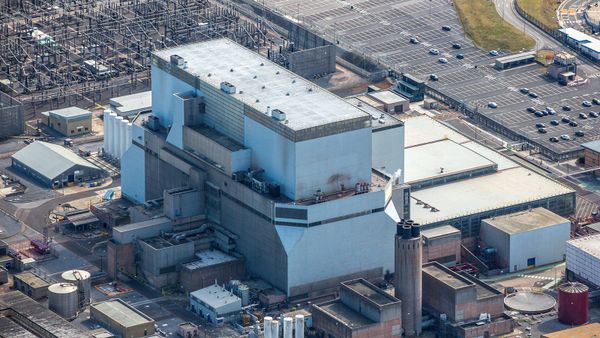
Key Takeaways
- Uranium-235 (U-235) is ideal for nuclear power because it can undergo induced fission, where its nucleus splits after absorbing a neutron, releasing a significant amount of energy (about 200 MeV) and generating more neutrons to continue the process.
- The fission of U-235 not only produces a substantial amount of heat and gamma radiation but also results in products that weigh less than the original atom.
- For nuclear power production, natural uranium must be enriched to increase its U-235 content to at least 3 percent, as natural uranium contains only about 0.7 percent of U-235, making enriched uranium a critical component for the sustainable generation of nuclear energy.
Nuclear plants in the U.S provide approximately 20 percent of the electricity needed by the country every year. Nuclear plants in France supply that country with approximately 77 percent of the electricity it requires per year [source: NEI]. What basic element, found in abundance on Earth, do these nuclear plants require in order to produce these huge amounts of power? The answer is uranium.
Nuclear fission occurs when one atom splits into two, creating energy. Spontaneous fission occurs all the time. Uranium undergoes spontaneous fission at a very slow rate, and emits radiation. Uranium-235 (U-235) is only found in about 0.7 percent of uranium found naturally, but it is well-suited for producing nuclear power. This is because it decays naturally by a process known as alpha radiation. This means that it releases an alpha particle (two neutrons and two protons connected together). Another reason that U-235 is ideal for producing nuclear power is that unlike most materials, U-235 can undergo induced fission. When a free neutron collides with a U-235 nucleus, the nucleus will usually capture the neutron and split extremely quickly. The splitting of a single U-235 atom can release roughly 200 MeV (million electron volts).
Advertisement
When the uranium atom splits, lots of heat is released, as well as gamma radiation (high-energy photons). The resulting two atoms also release gamma radiation, in addition to beta radiation (very fast electrons). The products of the fission, together with their neutrons, weigh less than the original U-235 atom. The difference in weight becomes energy and can be calculated using the equation E=mc2.
In order for uranium to be suitable for power production in nuclear plants, it has to be enriched so that it contains at least three percent of U-235.
Advertisement

